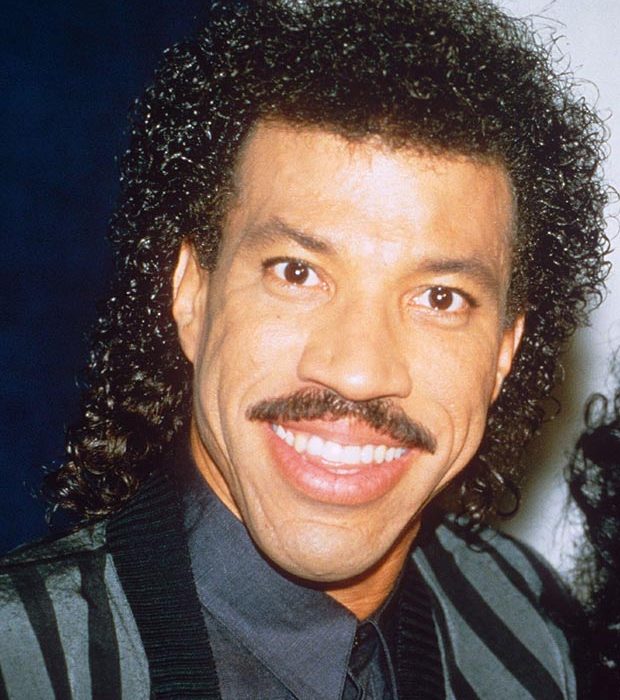Ah… the Jheri curl. It sounds like some sort of new, slightly Disney-infused (and therefore American!) concoction of an ice cream. Care for a twirl in that one son!? A full-blown, commercialized concotion for the iPad-tweeting-vine-ing-snapchatting age of children…
Well folks, it’s actually a hairstyle invented by Jheri Redding – the founder of modern-day hair conditioner. A flamboyant and ‘bad’ style (in the MJ 80s sense of the word, i.e. equating somewhat to the 60s buzzword, “radical”), the Jheri curl was popularized amongst the African-American community in the United States, with its heyday arriving in the mid-1980s.
The Jheri curl made its way into the commercial hairstyling stratosphere at the end of the 1970s with singer-songwriter, Lionel Richie wearing the style in its proto format. However, it wasn’t Mr. Richie who’d be the celebrity who’d bring the Jheri curl into the mainstream limelight…
It was in fact the King of Pop himself, Michael Jackson, who’d fulfill this role by ditching his boyish afro – a sociocultural look that was waning in terms of its, clout, edge, and buzz – for the newly-emerging and chemically-overwhelming Jheri curl.
Of course, at the time, the chemical technologies side of things was little known to the public. They knew there were three key stages:
Two-part application:
- Softener to loosen the hair and set the curls.
- Chemical solution to permanently curl the hair (for a long-lasting, 24 hour-long effect at the time).
- Application of curl activator spray and heavy moisturizers to maintain the Jheri curl look for a week, for instance.
Then, by the mid 80s, as the style gained ground across the different states in the US, it also gained a foothold in the world of commercials, with the following wide-scale advertisement, for instance:
Things were on the up. Things were looking up. For the Jheri curl I mean. Next came mass distribution and commercialization of the product thanks to entrepreneur, Comer Cottrell, with his Curly Kit, which enabled black men harboring thoughts of being like Jackson to realize such dreams. The Curly Kit was effectively founded upon a low-cost, mass-market business model and to this day it is still renowned as being the largest single black cosmetics product.
By 1984, though, things turned sour. Particularly for the King of Pop who, having seen his album Thriller, become the best-selling album of all time (still to this day with 42.4 million copies sold), would endure a painful and life-changing day as he recorded a new Pepsi commercial.
During the recording of the commercial, on the sixth take, programmed pyrotechnics went off much too early reacting with Jackson’s premium curl activator spray, and thus setting fire to his full head of curly locks. Not only did the King of Pop suffer third-degree burns, but he was also permanently traumatized. In fact, many believe this Jheri curl product-related accident led to Jackson’s obsession with surgery and skin products. Above all, though, it caused him great pain, which no doubt led to his dependency on painkillers for a large part of the second half of his life.
And so, suddenly, the Jheri curl was out. Down on its chemical luck.
Jackson’s freak and unfortunate accident would lead the masses to steer clear of any hair softener, styler and curl products, including gel (at least for a while!).
But then remarkably, the curl would make a surprising comeback a couple of years later in 1987 with the forming of super rap group, the N.W.A. In the beginning, the group’s own Don Corleone, Eazy-E (real name Eric Wright) and N.W.A. member, the young gun whizzkid rapper, Ice Cube (real name O’Shea Jackson) both decided to sport or ‘rock’ Jheri’s curl. As if it had never gone out of fashion and there was no real obvious danger…
Following Ice Cube’s sudden and explosive departure from the group, though, in 1989, he symbolically cut off his Jheri curls, opting for the new style emerging at the time, the buzz cut. Many believe this was also Cube’s attempt at fully distancing himself from any previous and further comparisons with Eazy-E.
Of course, that wasn’t the end of it as the Jheri curl would then make one last comeback, promoting a calmer, more corporate style to mirror the less edgy and more soulful New Jack swing sound emerging at the beginning of the 90s. The style was thus christened the Nu Wave.
Tune in for more hair-raising issues in the next blog.
For further information on the Jheri curl, visit: http://www.huffingtonpost.com/entry/jheri-curl-hair-pop-culture_55ca1c1fe4b0f1cbf1e64b01
This is not an exit.





